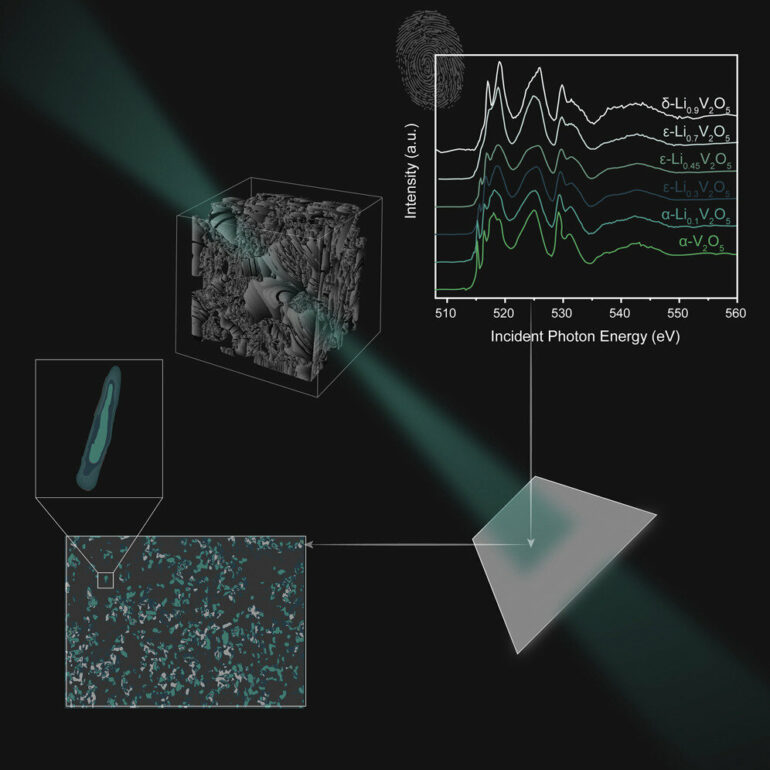A team of scientists from the United States, Canada and Germany are tackling one of the largest challenges of our generation—reliable energy storage.
The international group of experts, led by researchers from Texas A&M University, have combined powerful imaging techniques and large data sets to better understand why lithium-ion batteries fail and how they can be improved.
Their innovative approach has brought the team one step closer to solving this complex problem.
“One technical gap that exists today is that we don’t really understand fully what’s happening at the nanoscale and that’s where we’ve worked closely with a Canadian Light Source to leverage a number of different imaging techniques to investigate further,” says David Santos, a Texas A&M chemistry Ph.D. graduate and former member of Texas A&M chemist Sarbajit Banerjee’s research group.
The team was able to visualize the flaws and map defects that occur within the batteries using the SM beamline at the Canadian Light Source (CLS)—located at the University of Saskatchewan (UofS). Their findings were recently published in Patterns.
“The X-ray tools at the Canadian Light Source are great for eavesdropping on the batteries, and the little secret conversations that ions are having and understanding what makes them fail,” says Banerjee.
The team is interested in identifying in real time the flaws that occur which would allow them to measure the complex relationship between the battery’s materials, its shape, and the chemical reactions that occur within. Reaching this goal would allow researchers to proactively address design failures.
A battery is kind of like a ceramic coffee mug,” says Santos. “If you pour that hot coffee in and out, you have thermal changes and over time that can lead to cracks in the mug.”
The chemical and mechanical changes that occur during a battery’s lifetime can also lead to flaws—like cracks in the ceramic mug—affecting its longevity.
Santos says that drawbacks that affect a battery’s performance are also linked to safety hazards and have a large impact on the environment. More efficient batteries can help reduce waste and help us transition to a greener grid.
“At the end of the day, building a better battery touches all aspects of sustainability,” says Santos.
More information:
David A. Santos et al, Multivariate hyperspectral data analytics across length scales to probe compositional, phase, and strain heterogeneities in electrode materials, Patterns (2022). DOI: 10.1016/j.patter.2022.100634
Provided by
Canadian Light Source
Citation:
Building better batteries for a better future by visualizing nanoscale flaws in current models (2022, December 20)



